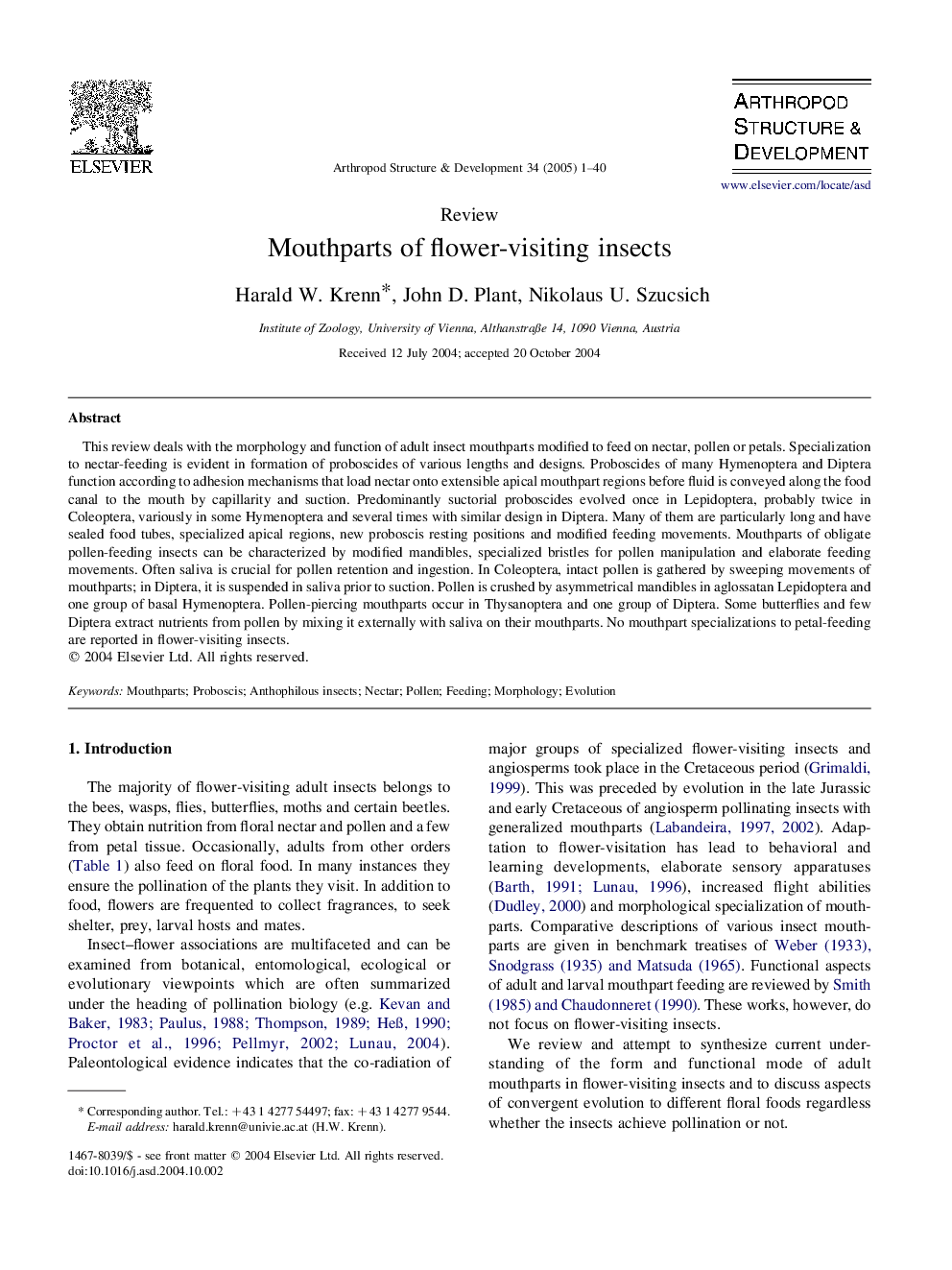| کد مقاله | کد نشریه | سال انتشار | مقاله انگلیسی | نسخه تمام متن |
|---|---|---|---|---|
| 9104156 | 1153200 | 2005 | 40 صفحه PDF | دانلود رایگان |
عنوان انگلیسی مقاله ISI
Mouthparts of flower-visiting insects
دانلود مقاله + سفارش ترجمه
دانلود مقاله ISI انگلیسی
رایگان برای ایرانیان
کلمات کلیدی
موضوعات مرتبط
علوم زیستی و بیوفناوری
علوم کشاورزی و بیولوژیک
دانش حشره شناسی
پیش نمایش صفحه اول مقاله

چکیده انگلیسی
This review deals with the morphology and function of adult insect mouthparts modified to feed on nectar, pollen or petals. Specialization to nectar-feeding is evident in formation of proboscides of various lengths and designs. Proboscides of many Hymenoptera and Diptera function according to adhesion mechanisms that load nectar onto extensible apical mouthpart regions before fluid is conveyed along the food canal to the mouth by capillarity and suction. Predominantly suctorial proboscides evolved once in Lepidoptera, probably twice in Coleoptera, variously in some Hymenoptera and several times with similar design in Diptera. Many of them are particularly long and have sealed food tubes, specialized apical regions, new proboscis resting positions and modified feeding movements. Mouthparts of obligate pollen-feeding insects can be characterized by modified mandibles, specialized bristles for pollen manipulation and elaborate feeding movements. Often saliva is crucial for pollen retention and ingestion. In Coleoptera, intact pollen is gathered by sweeping movements of mouthparts; in Diptera, it is suspended in saliva prior to suction. Pollen is crushed by asymmetrical mandibles in aglossatan Lepidoptera and one group of basal Hymenoptera. Pollen-piercing mouthparts occur in Thysanoptera and one group of Diptera. Some butterflies and few Diptera extract nutrients from pollen by mixing it externally with saliva on their mouthparts. No mouthpart specializations to petal-feeding are reported in flower-visiting insects.
ناشر
Database: Elsevier - ScienceDirect (ساینس دایرکت)
Journal: Arthropod Structure & Development - Volume 34, Issue 1, January 2005, Pages 1-40
Journal: Arthropod Structure & Development - Volume 34, Issue 1, January 2005, Pages 1-40
نویسندگان
Harald W. Krenn, John D. Plant, Nikolaus U. Szucsich,